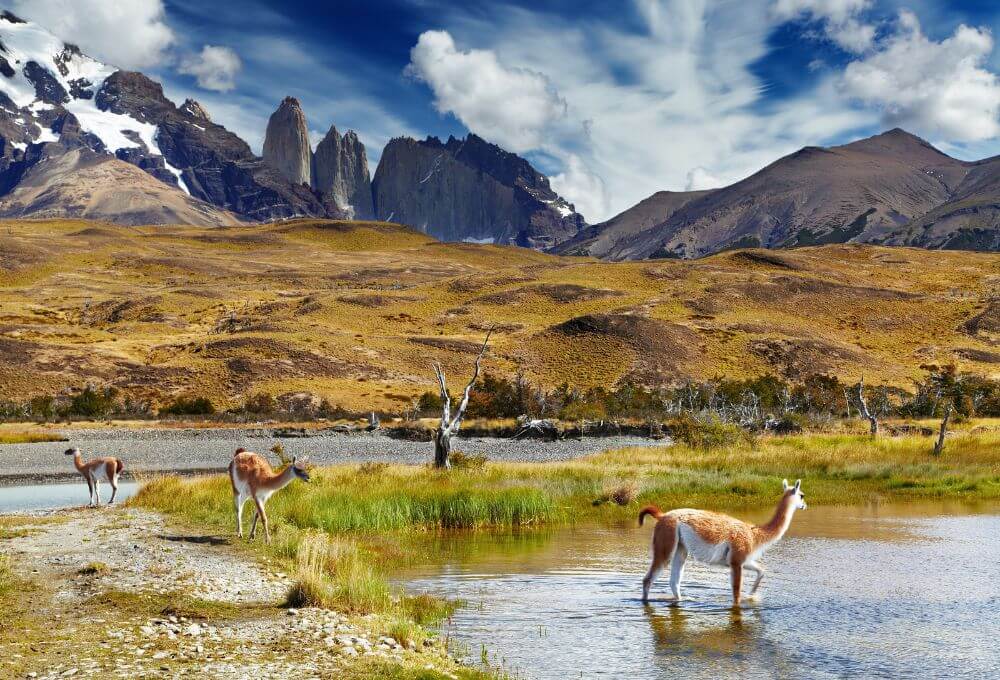So, you’ve got that undeniable itch for adventure, the kind that whispers of rugged landscapes, wind-swept plains, and snow-capped mountains. Patagonia, straddling southern Argentina and Chile, is more than just a dreamland for trekkers and nature-lovers—it’s a place steeped in history, bursting with cultural flavor, and rich in architectural gems that tell stories from centuries past.
Let’s dive into the Argentine side of Patagonia and explore its incredible heritage, cultural traditions, and everything you need to know before setting off on your Patagonian adventure.
The Untamed History of Patagonia
Origins and Early Inhabitants
Long before Patagonia became a bucket-list destination, it was home to indigenous groups like the Tehuelche, Mapuche, and Selk’nam peoples. These resilient communities adapted to Patagonia’s harsh climate, living in harmony with its unforgiving terrain. The Tehuelche, known for their tall stature and nomadic lifestyle, are among the most recognized early inhabitants.
European contact began in 1520 when Ferdinand Magellan sailed through what is now the Strait of Magellan, laying the foundation for future exploration. The name “Patagonia” itself is believed to derive from “Patagón,” the name Magellan gave to the natives he encountered, whom he described as giants.
Colonization and Conflicts
By the 18th and 19th centuries, Patagonia saw increased Spanish influence, followed by waves of colonizers, missionaries, and settlers. This eventually led to the “Conquest of the Desert” in the 1870s, a military campaign by the Argentine government aimed at claiming Patagonian land from indigenous people—often at the cost of lives and culture.
Founding of Patagonian Cities
Many of Patagonia’s major cities were founded during or after this campaign:
- San Carlos de Bariloche: Founded in 1902, known for its Alpine-style architecture and chocolate-making.
- El Calafate: Emerged in the early 20th century as a wool trading post, officially declared a city in 1927.
- Ushuaia: The southernmost city in the world, established in 1884 as a penal colony.
Cultural Significance: Where Nature Meets Identity
Patagonia is more than vast landscapes—its heart beats through its people and their traditions.
The Gaucho Heritage
The Gaucho (Argentine cowboy) is a symbol of Patagonian identity. Gauchos were instrumental in taming the Patagonian wilderness and still play an active role in rural areas. Their culture is alive through folk music, asado (barbecue) rituals, and traditional clothing, especially during local Fiesta Nacional del Gaucho celebrations.
Festivals and Traditions
Patagonian towns might seem sleepy from a distance, but they come alive with colorful and heartwarming festivals:
- Fiesta Nacional del Lago Argentino (February, El Calafate): Celebrates the region’s natural wonders with music, fireworks, and traditional food.
- Fiesta Nacional de la Nieve (July, Bariloche): A winter celebration featuring snow sculpture contests and ski shows.
- Festival del Chef Patagónico (April, Villa Pehuenia): A culinary festival that showcases local produce like lamb, trout, and berries.
Languages and Indigenous Influence
Spanish is the official language, but Mapudungun (language of the Mapuche) and other indigenous dialects are still spoken in smaller communities. Some towns are even reclaiming indigenous place names in efforts to preserve cultural memory.
Architectural Highlights: A Walk Through History
Patagonia might be better known for its mountains and glaciers, but its buildings have their own stories to tell.
Bariloche’s Alpine Charm
A walk through Bariloche feels like stepping into a Swiss village. Its Alpine-style architecture was influenced by Swiss and German immigrants in the early 20th century. Landmarks like the Centro Cívico, built in 1940, showcase stone-and-wood structures designed to blend with the surrounding mountains.
The Maritime Influence in Ushuaia
Ushuaia, at the edge of the world, offers a stark contrast—colorful wooden houses and rugged structures adapted for the Antarctic climate. The Museo Marítimo, housed in a former prison (built in 1902), is a must-visit for history buffs.
Wales in Patagonia? Yes, Really!
In towns like Trelew and Gaiman, you’ll find a surprising twist—Welsh architecture and tea houses. Welsh settlers arrived in the 1860s, seeking religious freedom, and their heritage is preserved through capillas (chapels) and Eisteddfod festivals (Welsh cultural events).
A Living Calendar: Historical Events and Commemorations
Want to time your visit with a taste of the past? Here’s a calendar of annual historical events and festivals that echo Patagonia’s cultural richness:
| Event | Location | Month | What It Celebrates |
|---|---|---|---|
| Fiesta Nacional del Lago Argentino | El Calafate | February | Founding of Lake Argentino; nature & music fest |
| Fiesta Nacional de la Nieve | San Carlos de Bariloche | July | Winter sports, traditions, and local art |
| Día del Gaucho | Nationwide (esp. rural Patagonia) | December 6 | Life and legacy of the gaucho |
| Festival del Chef Patagónico | Villa Pehuenia | April | Culinary traditions and local cuisine |
| Fiesta de la Cerveza Artesanal | El Bolsón | February | Craft beer culture and live music |
| Eisteddfod Cultural Festival | Trelew/Gaiman | October | Welsh-Argentine music, poetry, and arts |
Planning Your Patagonian Adventure
Of course, no guide to Patagonia would be complete without a few travel tips:
- Best Time to Visit: November to March for summer adventures. July-August for snow sports.
- Must-See Places: Perito Moreno Glacier, Fitz Roy Range, Tierra del Fuego, and the Patagonian Steppe.
- Getting Around: Domestic flights connect major towns. Rental cars are ideal for off-the-beaten-path exploration.
Final Thoughts
Patagonia isn’t just a place—it’s a feeling. A sweeping silence in the wind, a story in every stone, and a heartbeat that echoes through traditions and celebrations. Whether you’re wandering through the snowy streets of Bariloche or sharing mate with locals in a mountain village, adventure in Patagonia is more than sightseeing—it’s a journey through time, culture, and the soul of Argentina.
So pack your hiking boots—and your curiosity. Patagonia is calling.

[…] Adventure in Patagonia: Discover Argentina’s Wild Frontier of History and Culture […]